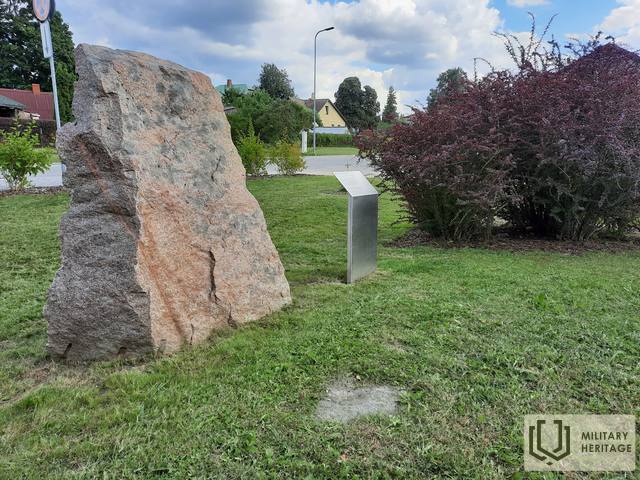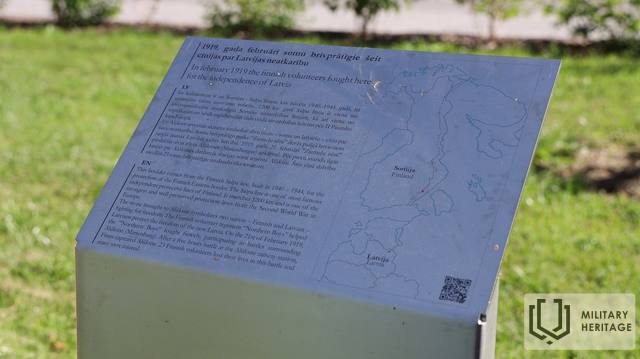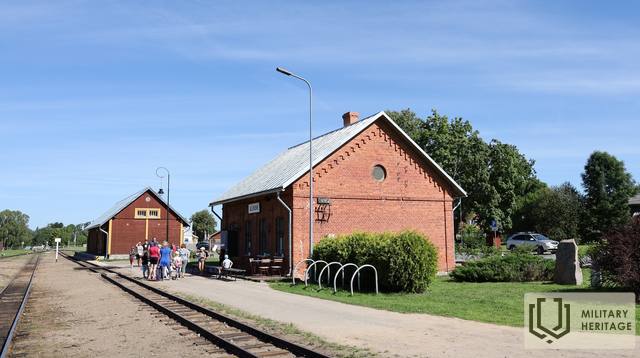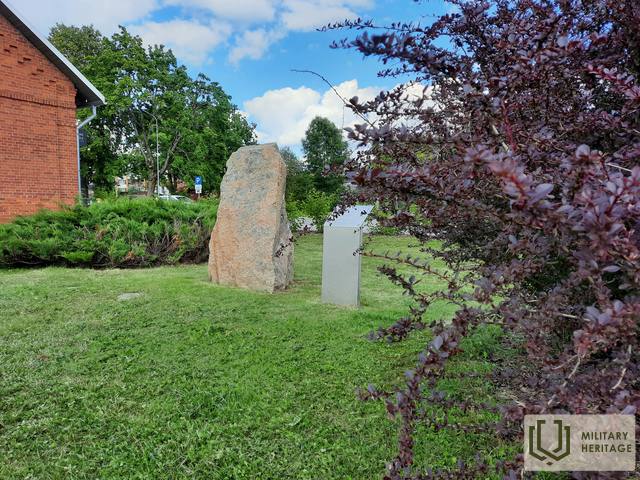Memorial stone to the Finnish Volunteer Regiment "Boys of the North"
Memorial site

Located in Alūksne, Jāņkalna Street 52, near Alūksne Narrow Gauge Railway Station.
On February 23, 2019, to mark the centenary of the Latvian War of Independence, a special memorial was created at the initiative of the Association of Independence Fighting Traditions (Finland) to honor the fallen Finnish volunteers, with a special boulder and information board. The memorial stone to Alūksne was removed from the Salpa line in Finland, which was built in 1940-1944. to protect the eastern border of Finland. The 1,200 km long Salpa line is one of the most important lines of defense in independent Finland, as well as one of the strongest and best-preserved defenses of its kind in Europe since World War II.
The stone brought to Aluksne symbolizes the struggle for independence of two nations - the Finns and the Latvians. A group of Finnish volunteers "Northern Boys" went to help Latvians protect the freedom of the new Latvian state. On February 21, 1919, the "Northern Boys" took part in fierce battles around Alūksne (Marienburg). After a five-hour battle at Alūksne railway station, the Finns occupied Alūksne. 23 Finnish volunteers were killed and many injured in the fight.
Used sources and references:
Tuomo Juntunen. Marnienburg 21. 2. 1919. Pirkkala 2019, p.
A memorial place for Finnish soldiers has been unveiled in Aluksne. Alūksne District News. March 6, 2019. No. 3 (111).
Related timeline
Related topics
Related stories
About the Latvian War of Independence and the events of 1918 in Aluksne
In 1918, when German troops entered Alūksne, Latvian rifle battalions retreated to Soviet Russia. Until the beginning of December 1918, the German regime was established and reorganized. After Germany succumbed to the war, the Bolsheviks returned to Aluksne and regained power. During the Latvian War of Independence, Finnish volunteers also fought in the Estonian army. On February 21, 1919, fierce battles took place between the Bolsheviks and the Finnish Volunteer Regiment "Northern Boys" in Aluksne, near the station.
About the Latvian War of Independence and the events of 1919 in Aluksne
On March 27, 1919, the 1st Valmiera Infantry Regiment, together with the Estonian bodyguard Tallinn (then Rēvele) and Tērbata battalions, as well as three armed trains from the banks of the Melnupe, began the liberation of Latvia from the Bolsheviks.
Memories of Anšlavs Eglītis about the Latvian War of Independence and the events of 1919 in Aluksne
On March 27, 1919, the 1st Valmiera Infantry Regiment, together with the Estonian bodyguard Tallinn (then Rēvele) and Tērbata battalions, as well as three armed trains from the banks of the Melnupe, began the liberation of Latvia from the Bolsheviks.
Battle of the Finnish Boys' Regiment "Northern Boys" in Beja
On February 23, 1919, an intelligence unit of the Finnish Volunteer Regiment "Northern Boys", hoping to obtain additional armaments and ammunition, reached the cliff of the river Beja School, where a collision with the Bolsheviks took place (Battle of Babeckas). 10 soldiers of the Finnish regiment fell in this battle.
Consecration of the Finnish Jaeger flag at the Holy Trinity Cathedral in Liepaja
The first flag of the Independent Finland was consecrated in 1918 in Liepaja, at the Holy Trinity Church, where the Finnish Jägers took an oath of allegiance to the legitimate government of Independent Finland before going home.

















